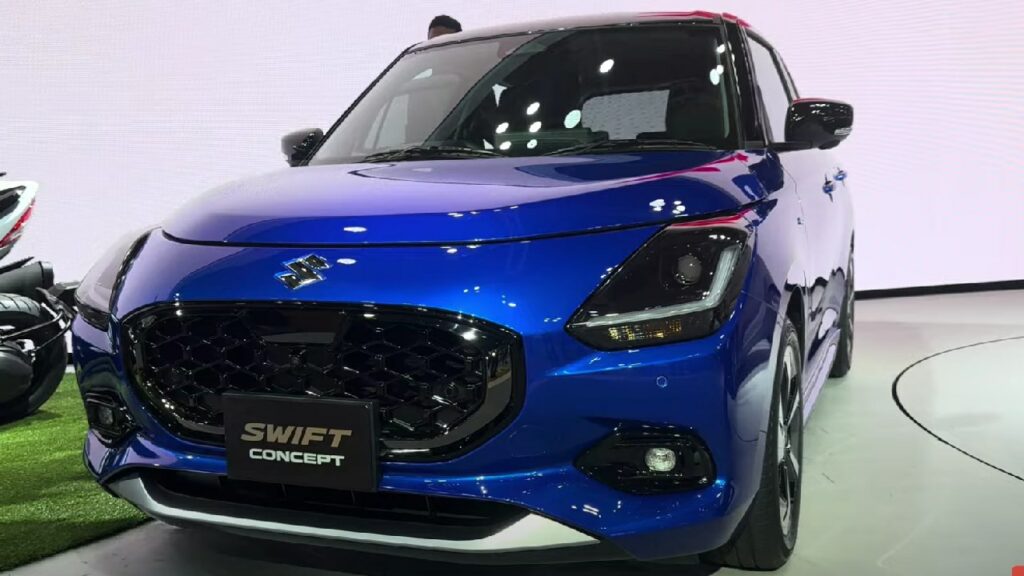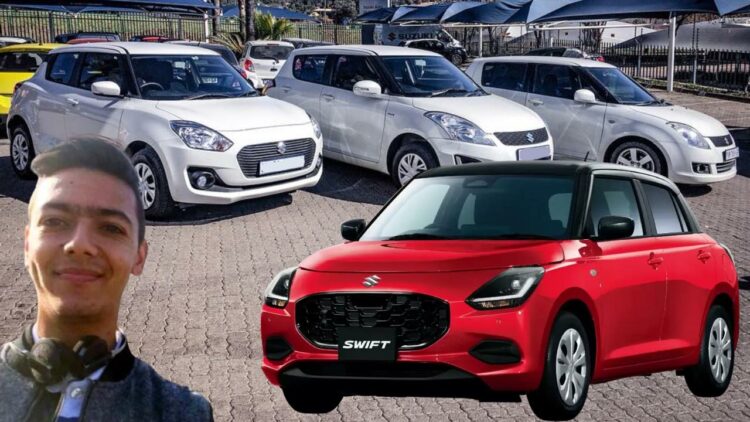The evolution of the Maruti Suzuki Swift in India is a journey in itself. I still remember watching the hatchback go by on the streets with a sense of aspiration. First launched in our market back in 2005, Swift was a dream car for people who wanted to buy their first vehicle. Remember, it was a time when the 800s, WagonRs and Zens were all the rage. However, these three were the products of the 1990s. They represented a majority of the first-time buyers. However, Swift changed the game by offering something peppy and feature-rich. It was definitely meant for people looking to sequester performance and own a slightly more premium car than most Maruti Suzuki cars back then.
You may also like: 2024 Maruti Suzuki Swift Gets ‘Cool Yellow Rev’ Treatment for Tokyo Auto Salon
Evolution of Maruti Suzuki Swift
The upcoming Maruti Swift will be the fourth generation iteration of the successful hatchback. As per the official data, the largest carmaker in the country had sold over 2.5 million (25 lakh) units of the Swift back in 2021. Going by the run rate of around 15,000 units a month since then, I expect the number to be close to 2.9 million (29 lakh) by now. That, alone, is a testament to the mad popularity of the Swift moniker. Note that this doesn’t even encompass the sedan spin-off of the Swift, the Dzire, which in itself, is a madly successful compact sedan due to widespread appeal among private and commercial buyers. 2024 will witness the launch of the 4th-gen model which was recently showcased at the Japan Mobility Show.
You may also like: Upcoming Small Cars in India in 2024 – New Maruti Swift to Renault Kwid EV
Powertrains Over The Years
The journey started with the 1.3-litre SOHC 16-valve G13BB mill back in 2005 which also powered the Esteem. It produced 92 hp and 116 Nm of peak power and torque. In 2007, there was the introduction of a Fiat-sourced 1.3-litre DDiS turbo diesel engine. It generated 75 hp and 190 Nm of peak power and torque. However, by 2010, the BS-IV norms came into existence. That is when the Swift got shifted to the modern 1.2-litre DOHC K12M engine. This K-Series engine, with tons of modifications over the years, has carried onto the existing model. Finally, the upcoming 4th-gen model will have the new Z-Series engine marking a departure from the K-Series unit.
You may also like: Toyota Wants to ‘Badge-Engineer’ Swift, Suzuki Refuses!
Design and Features
The one thing that has not changed much since its inception is the silhouette. I remember the swept-back headlamps of the first-generation model distinctly. It remained like that for a very long time. Even today, these trademark headlights offer some distorted avatar of that swept-back design language. Similarly, the dimensions have remained almost identical in all these years. What is fascinating is that the upcoming model will also bear only a small amount of aesthetic modifications. The story on the inside is, more or less, the same. While the cabin has become more modern, it is a general trend in the industry and not something specific to the Swift. Still, Maruti Suzuki has updated the exterior and interior of the Swift quite intelligently to ensure that it remains fresh even after almost 2 decades of existence.
You may also like: 30 Upcoming Cars in India in 2024 – New Maruti Swift to Tata Harrier EV

You may also like: Upcoming Maruti Cars in 2024 – New Swift to WagonR Facelift
Author’s Note
The new Swift brings a lot of excitement with it due to the new engine. It is quite impressive to see that the popularity and demand of the Swift is still incredibly high. It still remains around the top of the list of the highest-selling vehicles in India every month. The reasons are quite straightforward – people have immense trust in the Swift moniker, there have been no issues with the car, the dense service and sales network of Maruti Suzuki is perennially expanding and Maruti Suzuki has been able to keep the maintenance and running costs in check with a prime focus on mileage. Let us see how well the buyers embrace the new Swift.



